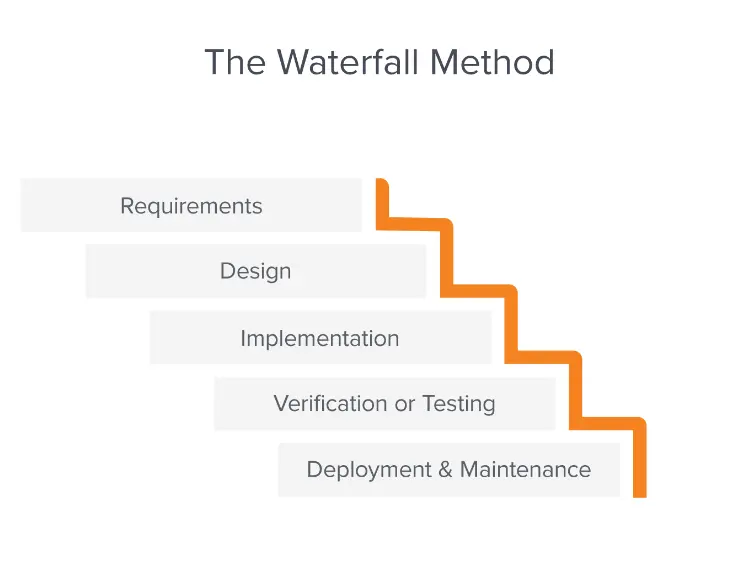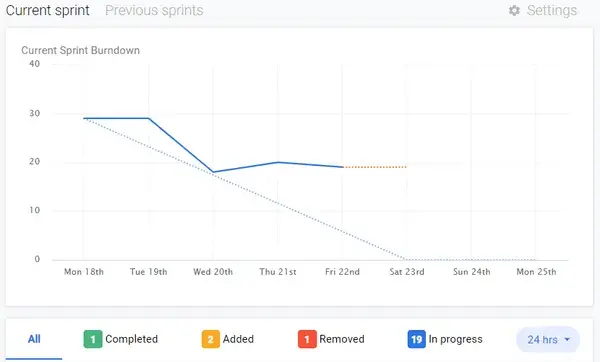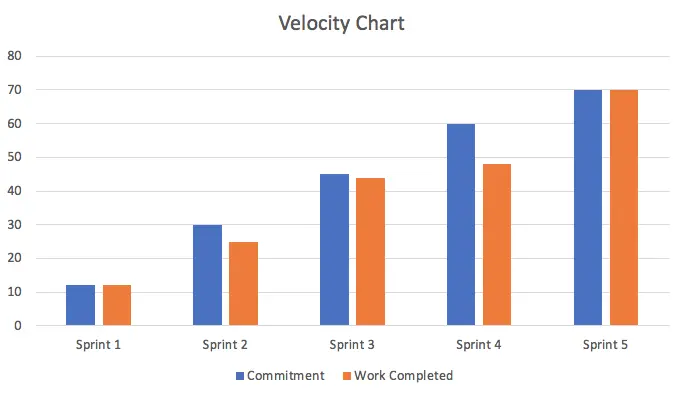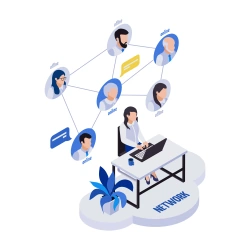Improving Project Velocity
As a project or team manager, how often have you been stressed about project delivery? Your team isn’t on track, the deliverables aren’t as quick as you want them, and you have to reassure the clients that their tasks will be delivered on time and the work is going smoothly.
You already have enough on your plate; project velocity shouldn’t be an added concern. This is why developing and delivering a project in the designated time frame is of the utmost importance. A lot of money and trust goes into the process, and failing to deliver on your word will set you back and paint a not-so-pleasant picture.
There are many reasons why the project velocity or deliverable speed is slow. For example, lack of clear communication, scope creep, delaying the bug fixes, etc.
An all-in-one solution sounds like a dream, doesn’t it? For example, having good communication and not infinitely coordinating between the client and the developers. There are numerous companies, including us, that provide the solutions to streamlining all such project management problems!
In this article, we will go over what project velocity in agile software is, how you can increase it, and calculate your project velocity.
So, without further ado, let’s get right into it!
What Is Project Velocity and Why Is It Important?
Velocity is the speed of an object travelling in a specific direction. Project velocity follows the same concept; it is the measure of how much work can be accomplished in a set amount of time.
Project velocity also serves as a measure of efficiency. By knowing the project velocity, you will know how the teams are performing, how long it’ll take for the project to be completed, etc.
A steady workflow will ensure that the project is delivered on time. In contrast, slow or inconsistent project velocity will make the process very bumpy and most likely delay the project.
Project velocity can make or break a project, and its importance can’t be understated and is crucial for every company.
What Is Agile Software and Agile Velocity?
Agile software development or more commonly known as Agile, is a development methodology used by companies to speed up their work while maintaining flexibility to changes.
Before Agile was adapted, companies and organisations used the waterfall method—like how a waterfall flows down in one way; likewise, the methodology consisted of completing each phase before moving on to the next. The illustration below, sourced from Adobe Workfront, explains this in an easy manner.

Some fatal drawbacks of that methodology were that the entire project was tested after it had been developed, there was no active participation of clients during the process, and no flexibility for revisions and changes.
Agile hugely changed the landscape—teams working in tandem, everyone knew what their roles were, and rigorous testing was conducted at each development step, which resulted in a high-quality product.

Moreover, the support that Agile got from the industry was monumental. There are excellent Agile management tools that help product managers stay true to the course, such as Atlassian JIRA and Trello, to name a few.
Agile velocity is the same thing as project velocity. It is a unit that is used to measure how much work the development team can do in one sprint. A tool like Corrello allows you to effectively measure how fast your team should be working on user stories:

How To Calculate Agile Velocity
User stories, hours, and story points are all units that help in calculating Agile velocity. Usually, it is calculated using user stories (which can be automatically done using Corrello), but that may differ from company to company.
The first thing to keep in mind is that the project velocity in Agile software will fluctuate due to a new environment and everyone learning the ropes. However, gradually everyone will settle in their roles and adapt to the changes.
This, on average, takes between three to five sprints. After that, the workflow will stabilise along with the project velocity.
So to begin the process, you will need to assign points to each user story or know how many points each story holds. Story points, on the other hand, follow a different route. They are shown either as linear (10, 20, 30, 40…) or as the Fibonacci sequence ( 1, 1, 2, 3, 5,8…).
The first step is done, and the user points are known. Now comes the second step in the process. You will need to calculate the individual velocity of each sprint. Let’s take an example so you can better understand how that works.
- Let’s assume your project has a total of four sprints. Each sprint has a different number of user stories and story points. To combine them, you need to see how much work is done in each sprint.
- In the initial sprint, there are, let’s say, five-user stories that hold two story points each. Your team managed to complete three user stories in the designated time frame so that the result would be six-story points. ( 3 x 2 = 6)
- The same procedure will be followed for the remaining three sprints. Sprint two has three user stories that have five-story points each. Your team gets the work done in time and completes all the stories. In this case, the result will be fifteen-story points. ( 3 x 5 = 15)
- Sprint three has ten user stories, each with four-story points. The team completes six out of the ten stories. The total points will amount to 24 points. ( 6 x 4 = 24)
- The final sprint has seven user stories, and each user story has 9 points. Your team manages to complete five stories. The result will be a total of 45 story points. ( 5 x 9 = 45)
Once you have the story points of each sprint, you will need to take the average of the final values. This will give you the average velocity.
Average velocity = 6 + 15 + 24 + 45 / 4 = 56.25
Velocity Chart
A velocity chart will help you to visualise the information you’ve gathered and better understand the nature of the project, how your team performed in each sprint and the overall progress of the project.

This is how it will look. If there are a lot of ups and downs in the chart, then that is an indication of unpredictability. If it is more streamlined, then that means the work is going smoothly, the scope is understood, and it’s easy.
What Are The Pros and Cons of Using The Agile Method?
The Agile method strives in specific circumstances. Therefore, it isn’t beneficial for every company and organisation. The hierarchy, project size, and multiple other factors impact the validity of the Agile method.
Pros:
-
Quality
Work in Agile is done in cycles. Testing is implemented at each phase during each cycle, ensuring high quality for each independent unit and then the project as a whole.
-
Control
Agile offers transparency and active involvement with the client. On top of that, daily meetings ensure that the project's direction is okay as well as give control over its features.
-
Less Risk
Developing a project using the Agile method makes it almost fail-proof. Each iteration ensures a functional component. Even if the entire project fails, you have little parts that you can use in other projects.
-
Flexibility
Due to the flexible nature of Agile, communication with the stakeholders results in the development team implementing changes as the need arises and knowing exactly what they have to deliver. In addition, changes and fixes are possible on short notice due to teams working in sprints.
-
Customer Satisfaction
There is constant communication with the client at each phase of the development process. This ensures that the end product is exactly according to their need, resulting in high customer satisfaction for the client and end-users of their product.
Changes can be readily implemented, and the fast delivery time enables the clients to capitalise on the market, also known as the first-mover advantage.
-
Early Benefits
The Agile methodology allows you to deliver the product at a fast pace. Each sprint gives you a working feature or component. Due to this, the finished product can be achieved in fewer sprints and launched in the market, giving you the first-mover advantage.
Since the model is flexible, even if there are some discrepancies upon launch, they can be quickly fixed, further driving the value.
Cons:
-
Vague Documentation
Traditional development methods started with documentation and then implementation. In Agile, development starts first, and documentation is done as the project progresses. This results in a not-so-elaborate document.
-
Difficult to track progress
The longer the project goes in Agile, the more difficult it is to track its progress. Since multiple components are being worked on simultaneously, you need to go through each of them and their iterations to gauge the progress.
-
Requires more effort
There is constant back and forth between the client and the development team. This means you have to maintain an active line of communication, implement the changes they want, wait for feedback, change it again if they disapprove, forward it as approved if it's accepted, and start working on the next thing.
This requires a lot of effort, time, and patience.
-
Lack of resource planning
Projects developed by using the Agile method are started without the dev team properly knowing what the product that they are working on is. Due to this factor, the resources that will be needed cannot be adequately defined. As a result, it may take a lot more than predicted or a lot less.
-
Ever going project
Since the development team has no clear picture of the final product and its features, developing and implementing new features can take more time, cost, and effort, actively delaying the development of the main project.
This also happens because the client is part of the entire procedure. They can demand abrupt changes or changes that were previously given the green light.
-
End result is divided
Each team has its own way of developing. However, when multiple teams work side by side, it's not hard to imagine that their components will differ a little from each other.
While this approach does ensure faster delivery of the product, the product may not go so well together due to these little differences.
Takeaways
There are multiple ways to build a product. You could use the traditional Waterfall method, go for Scrum or the Agile method. All of these serve a purpose in the development and management of projects. They have their strong suits as well as areas where they are lacking.
All things said and done, there is one thing every company and organisation in the world needs regardless of what development method they use. That is a one-stop-shop that gathers and visualises all the project information clearly and precisely.
No project manager wants to go back and forth with multiple teams, collect their information, compile it, report it and then do it all over again in case of some setbacks. This infinite process can go on and on, and you’ll never catch a break.
So it’s better to have all of this on a platform that handles everything by itself, and you get to make the decisions based on it, increasing your productivity and decreasing your stress levels. For more information, click here!


